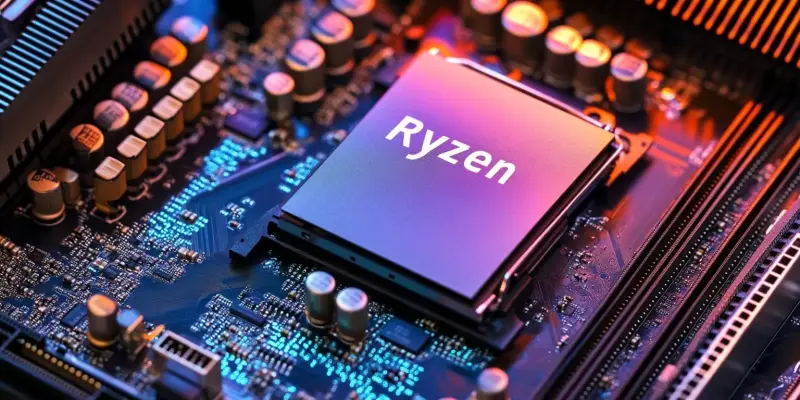At CES 2025 in Las Vegas, AMD made a significant impact with the unveiling of its new ‘Strix Halo’ Ryzen AI Max+ mobile processors. These innovations target the thin-and-light gaming laptop and AI workstation markets, featuring four standout models: Ryzen AI Max+ 395/Pro, Ryzen AI Max 390/Pro, Ryzen AI Max 385/Pro, and Ryzen AI Max Pro 380. This bold launch promises to reshape these sectors with unparalleled performance and capabilities.
Advanced Architecture and Components
High-Performance Ryzen AI Max+ 395
The flagship model of this lineup, the Ryzen AI Max+ 395, comes with a whopping 16 CPU cores and 40 GPU cores, making it a powerhouse in its category. It supports up to 128GB of unified memory, providing users with robust multitasking capabilities and smooth handling of vast AI models. The inclusion of 96GB of this memory dedicated to graphics ensures that even the most demanding visual tasks are executed effortlessly. This model is built on a cutting-edge 3nm process technology, which not only enhances performance but also boosts energy efficiency.
Additionally, the Ryzen AI Max+ 395 features a 40-core RDNA 3.5 integrated GPU known as the Radeon 8060S. AMD claims this is the fastest integrated GPU for any Windows laptop currently available. This makes it an outstanding choice for gamers seeking high-performance gaming laptops that do not compromise mobility. According to AMD, this GPU offers up to 1.4 times the gaming performance of Intel’s top Lunar Lake Core Ultra 9 288V and delivers AI performance up to 2.2 times higher than Nvidia’s desktop RTX 4090, all while utilizing just 87 percent of the power consumption.
Balanced Performance Across Models
The other models in the series, namely the Ryzen AI Max+ 390, 385, and Pro 380, cater to different performance needs and professional requirements. The Ryzen AI Max+ 390, for instance, comes with 12 CPU cores and 32 GPU cores, balancing high performance with energy efficiency. This model ensures fast execution of tasks, whether it’s gaming or engaging with AI-intensive applications. Its architectural design promises to meet the needs of both gamers and professionals who require reliable, powerful computing resources.
On the other hand, the Ryzen AI Max+ 385, featuring eight CPU cores and 32 GPU cores, provides adequate power for less demanding tasks while maintaining overall efficiency. This model is ideal for users who need robust performance, albeit at a slightly reduced scale compared to the flagship. The Ryzen AI Max Pro 380 is geared towards professional use, with six CPU cores, 16 GPU cores, and enhanced security and manageability features. This model’s design emphasizes solid performance and security, making it suitable for enterprise environments where data protection and efficient execution of professional tasks are paramount.
Versatility and Benchmark Performance
Multitasking and AI Workloads
All models in the Ryzen AI Max+ lineup exhibit a 55W base TDP, configurable between 45W and 120W, making them adaptable to a wide range of cooling systems. This flexibility ensures that each processor can be tailored to fit varied operational environments, from standard usage to intense computational tasks. These processors are designed to handle multitasking with ease, offering seamless integration of tasks ranging from video rendering to 3D modeling and data analytics. This versatility makes the Ryzen AI Max+ processors appealing not just to gamers but also to professionals in creative and technical fields.
Benchmarks have shown these processors to perform exceptionally well in a variety of demanding applications. For example, in video rendering software like V-Ray and Blender, AMD’s new processors have outperformed Apple’s latest M4 Pro processors by a significant margin. They also showed impressive results in 3D modeling applications like Corona, solidifying their position as a formidable choice for professionals. Despite slightly less compelling results in Cinebench scores, the overall performance remained competitive, underscoring the balanced capabilities of these processors.
Industry Impact and Future Prospects
AMD’s bold new launch is expected to reshape the gaming and AI workstation sectors by providing users with state-of-the-art processing power and improved efficiency. As technology continues to evolve, these processors signify a leap forward, ensuring AMD remains at the forefront of innovation in 2025 and beyond.

